10 Animals That Look Like Kangaroos but Aren’t
Hey there! Are you a fan of kangaroos? These unique creatures are beloved all around the world due to their distinctive features and hopping movements.
Did you know that there are other fascinating animals from different parts of the globe that share some similarities with kangaroos? In this article, we’ll explore some of these fascinating species. Let’s get started!
Animals That Look Like a Kangaroo but Aren’t
There are several animals that bear resemblance to kangaroos, but they are not actually kangaroos.
01. Patagonian Mara

The Patagonian Mara, also known as the “Patagonian Hare” or “Patagonian Cavy,” is a fascinating creature found in the grasslands of South America. Upon observing them, one can’t help but notice their striking resemblance to kangaroos, a remarkable feat of nature’s creativity.
With their elongated feet, long hind legs, and powerful hindquarters, Patagonian Maras share a remarkable likeness to their kangaroo counterparts.
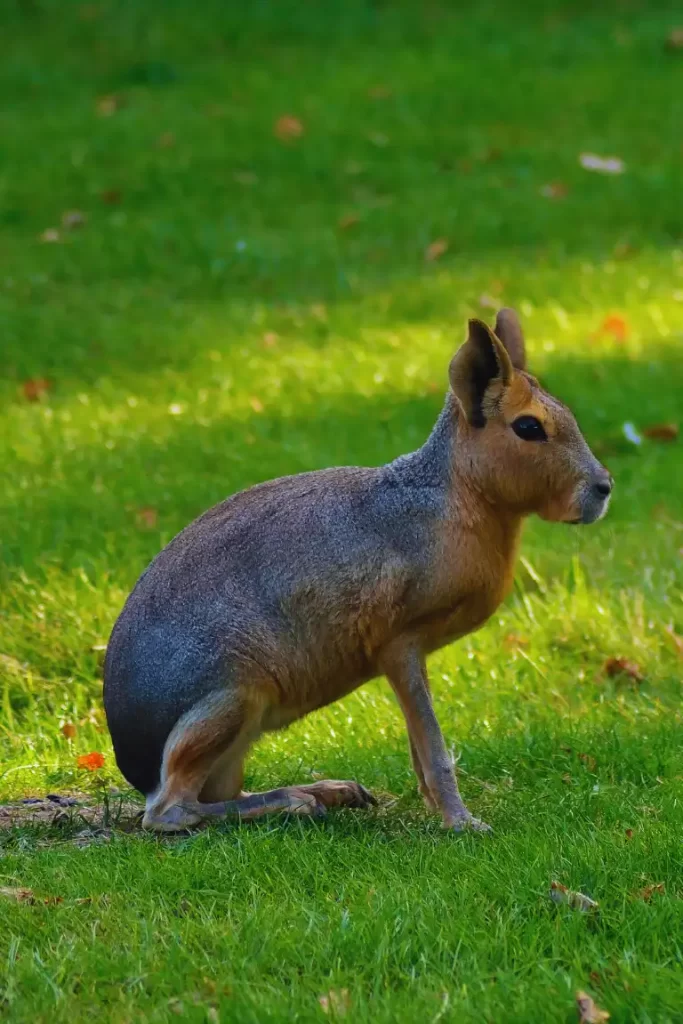
These incredible creatures are known for their impressive jumping abilities, which are similar to those of kangaroos. Their hind legs are incredibly powerful, allowing them to traverse their grassland habitat with agility and speed.
However, their resemblance to kangaroos goes beyond just physical appearance. Both Maras and kangaroos possess a natural talent for bounding across the landscape. Their hind legs act as springs, launching them into the air with impressive grace. This is a fascinating example of convergent evolution, where different species independently evolve similar traits to adapt to similar environments.
02. Springhare (Pedetes capensis)
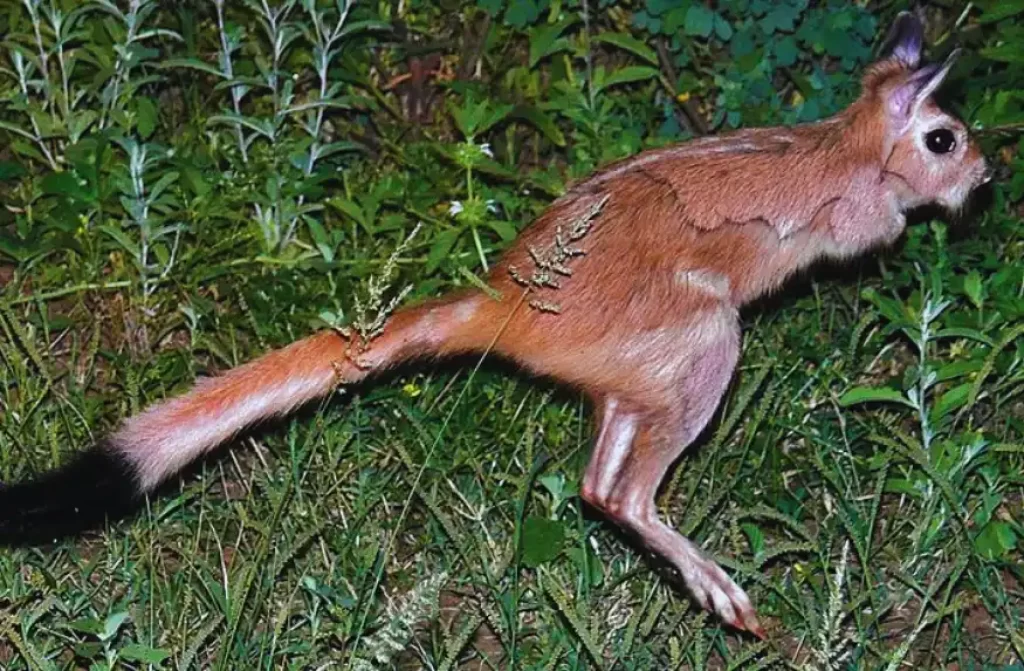
Have you ever heard of the Springhare (Pedetes capensis)? They’re amazing creatures that live in the African savannah. Even though they’re not in the same family as kangaroos (they’re in the Pedetidae family instead of the Macropodidae family), they look just like them!
Springhares have really long hind legs, strong hind feet, and beautiful long tails, just like kangaroos. They’re so agile and powerful that they can leap and bound across the African terrain just like their kangaroo cousins. It’s really cool to watch them in action!
When you see a Springhare hopping around, you’ll be amazed at how they move just like kangaroos. They’re so graceful and precise, defying gravity with each bound. These incredible adaptations allow them to navigate their habitat with ease and show off their amazing hopping abilities.
It’s really fascinating how Springhares and kangaroos have so many similarities, even though they’re not related. It’s a great example of how nature can create similar traits in different species when they face similar environmental challenges. It just goes to show how amazing and adaptable life on our planet really is!
03. Wallaroo
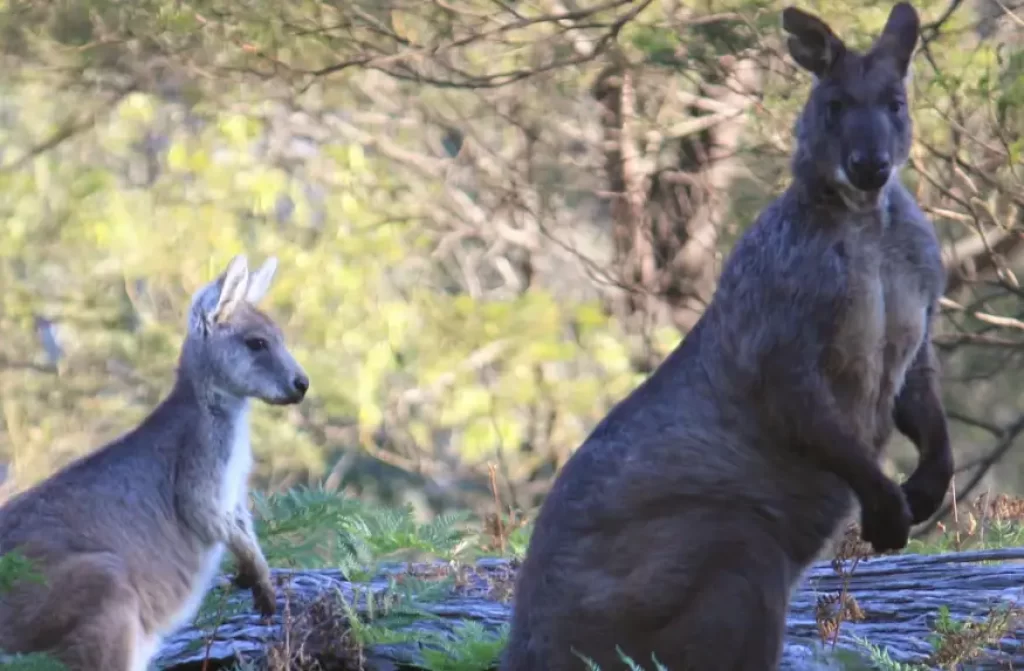
Wallaroos are super cute animals that look like a mix of kangaroos and wallabies. They have a special charm all their own!
These adorable beings, closely related to kangaroos within the Macropus genus, have their own unique charm that sets them apart.
With their stocky build, shorter tails, and broad heads, wallaroos are like the friendly blend of kangaroos and wallabies. They have a cuddly appearance that will make your heart melt and bring a smile to your face.
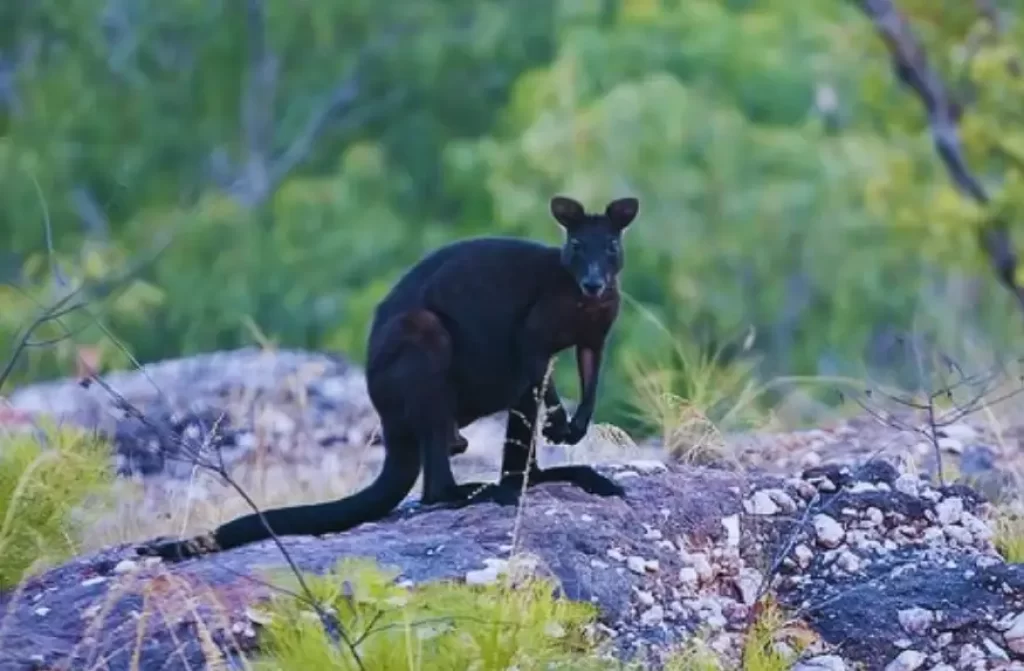
Just like their kangaroo cousins, wallaroos boast powerful hind legs and large hind feet that are perfect for hopping adventures. Watch them in action as they bounce and bound with a spring in their step, effortlessly exploring various terrains. Their hopping skills are a sight to behold and a reminder of the incredible athleticism of these marvelous creatures.
Although they may not look exactly like kangaroos, wallaroos share the same zest for life and the joy of hopping. Their playful nature and adorable features make them a true delight to encounter in the wild.
So, the next time you encounter a wallaroo, take a moment to appreciate their unique blend of kangaroo and wallaby traits. It’s a friendly reminder of nature’s ingenuity and the wonders that await us in the animal kingdom.
04. Jerboa
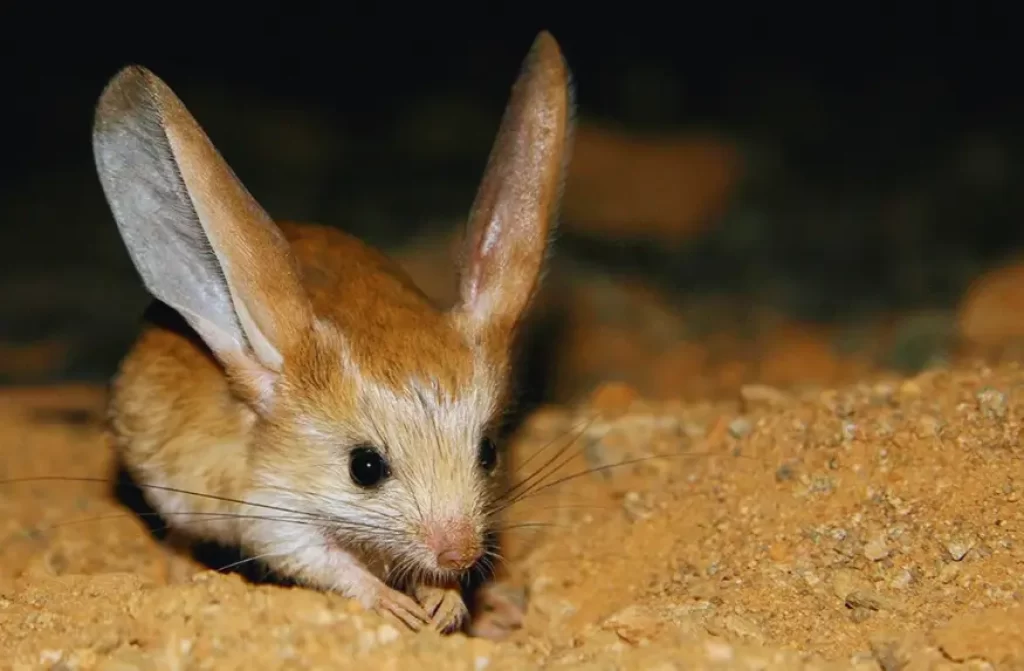
The jerboa is a small rodent native to desert regions of Asia and Northern Africa.
While it may be small compared to kangaroos, the jerboa has a special trick up its sleeve that makes it quite similar to its larger counterparts.
What’s really cool about jerboas is how they move around. Despite their small size, they have long hind limbs and big feet that help them jump really high. In fact, when they hop, they look just like kangaroos! It’s amazing to see these little creatures jumping around with such agility and grace.
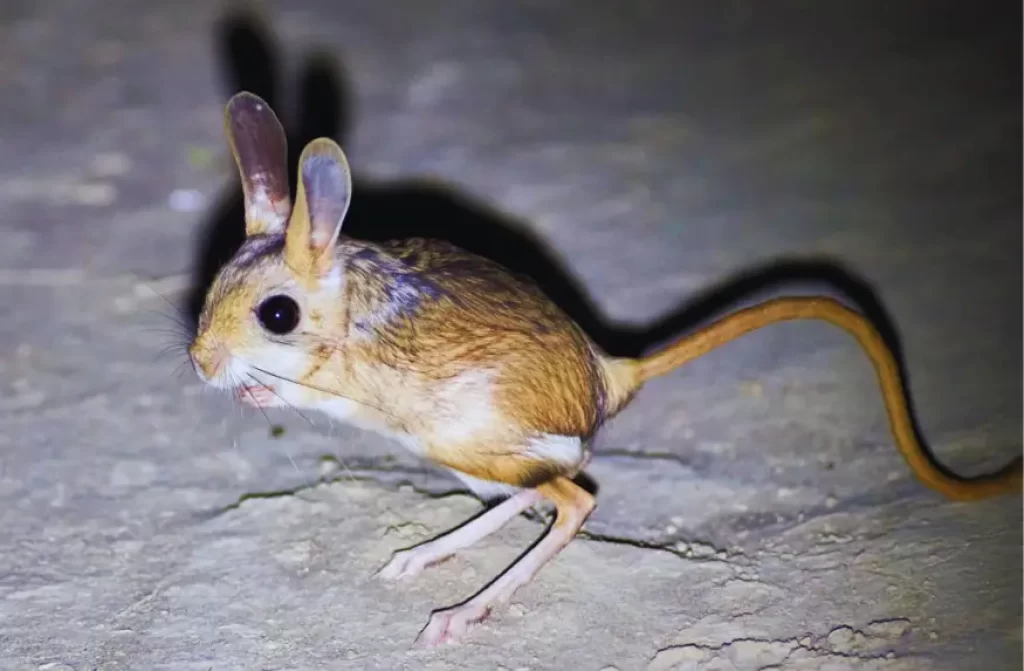
You might be wondering why jerboas and kangaroos move in such a similar way. Well, it’s because they both live in similar environments and face similar challenges.
The desert can be a tough place to survive, so these clever animals have evolved to have this incredible jumping ability. It helps them move quickly and efficiently, just like kangaroos do.
So, even though jerboas and kangaroos might look very different in size and appearance, they share this amazing skill of jumping. It’s a fantastic example of how animals can adapt to their surroundings and develop similar ways of getting around.
05. Quokka
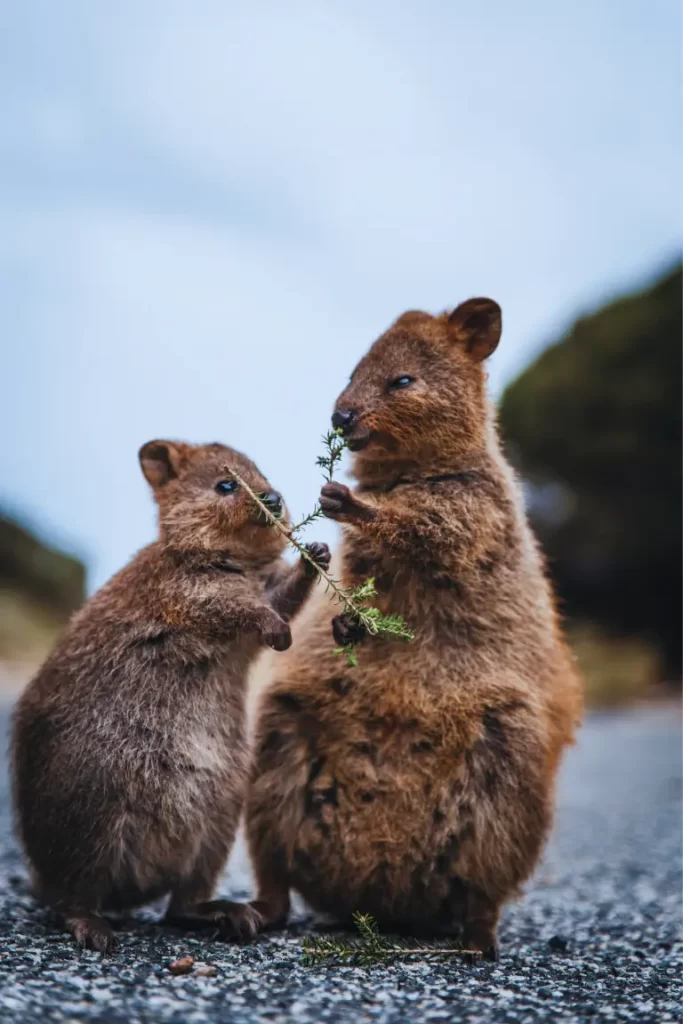
The quokka is a fascinating marsupial species that can be found in Western Australia. Interestingly, they share many similarities with their larger kangaroo cousins, despite their smaller size. These furry creatures have a unique body structure that includes short limbs and a relatively large tail, which are crucial evolutionary adaptations that help them survive on the island.
Quokkas are known for their amicable and welcoming behavior, which has earned them the nickname “the world’s happiest animal.” They are also known to be curious and friendly towards humans, which has made them a popular tourist attraction in recent years.
Despite their friendly demeanor, quokkas are still wild animals and should be treated with caution and respect. It’s important to remember that they are not domesticated pets and should not be approached or fed. In fact, it’s illegal to touch or interact with quokkas on Rottnest Island, where they are most commonly found.
Overall, the quokka is a remarkable animal that has uniquely adapted to its environment. While they may be small in size, they are big on personality and have captured the hearts of many around the world.
06. Springbok
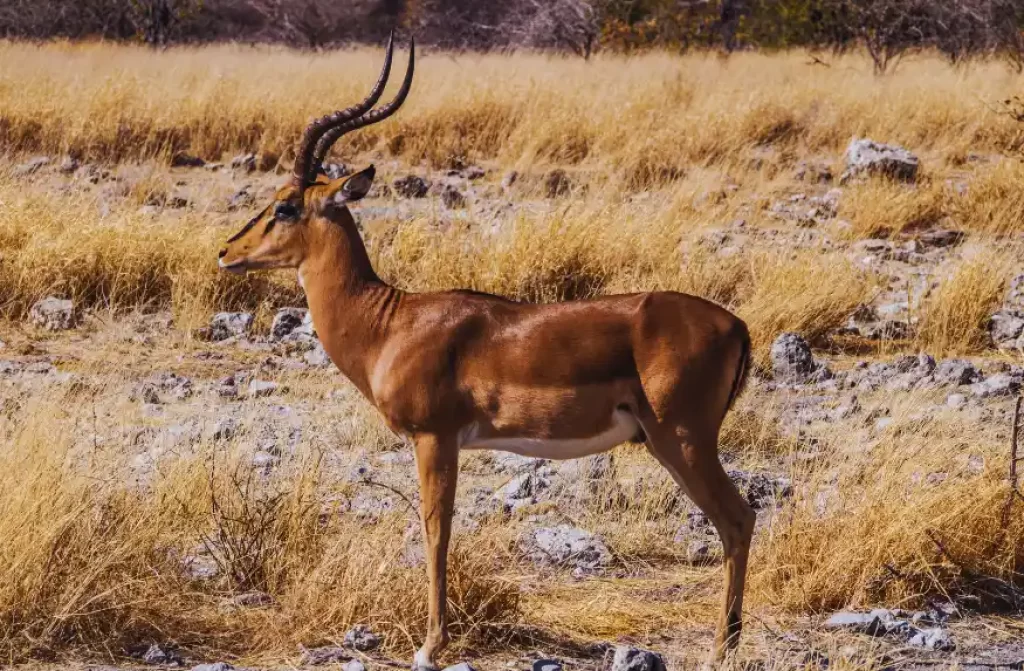
Let’s travel to the stunning landscapes of southern Africa and meet the magnificent Springbok! These medium-sized antelopes have a unique talent that reminds us of kangaroos.
Springboks are known for their extraordinary leaping ability. Just like kangaroos, they have long, slender legs and powerful hindquarters that allow them to jump with grace and strength.
They showcase their incredible skills through a behavior called “pronking.” When a springbok pronks, it leaps vertically into the air, arching its back and lifting all four hooves off the ground simultaneously. It’s a breathtaking sight!
The similarities between springboks and kangaroos go beyond their jumping prowess. They both possess the agility and speed necessary to thrive in their respective habitats. These adaptations help them escape predators and traverse the vast grasslands of Africa.
It’s remarkable how different animals in different parts of the world can develop similar abilities. The springbok’s pronking behavior is a testament to the wonders of nature and the incredible diversity of life on our planet.
07. Dik-dik
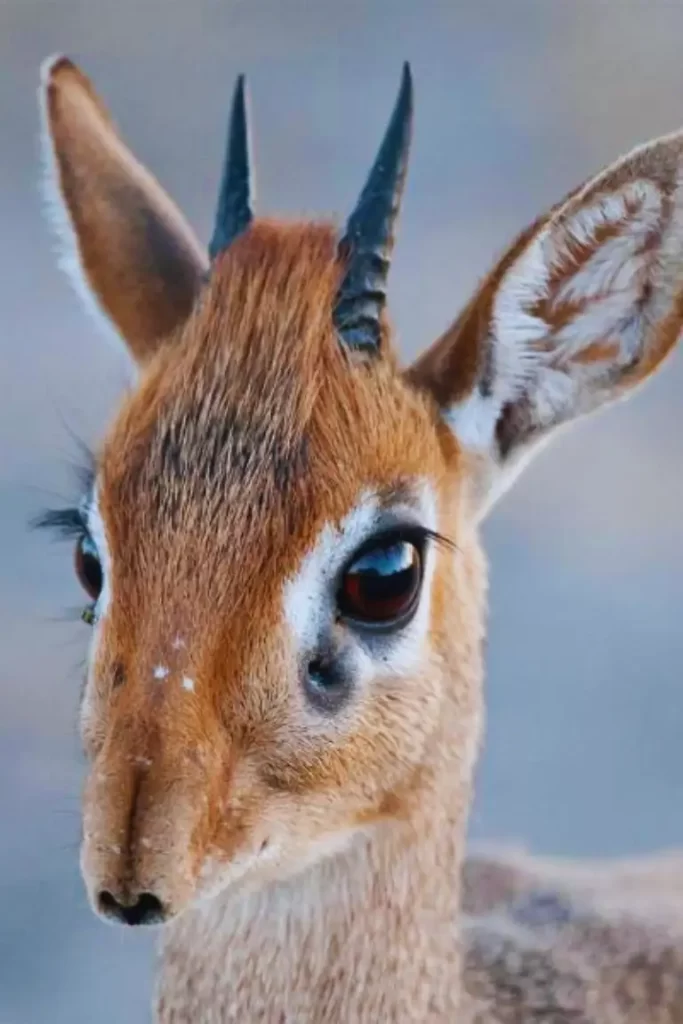
These small antelopes may not be kangaroos but they have some fascinating similarities.
When you observe a dik-dik, you’ll notice its unique body shape. While it may be smaller in size compared to kangaroos, it possesses elongated hind limbs that aid in its swift movements. This gives the dik-dik a somewhat kangaroo-like appearance, especially when it moves with agility and grace.
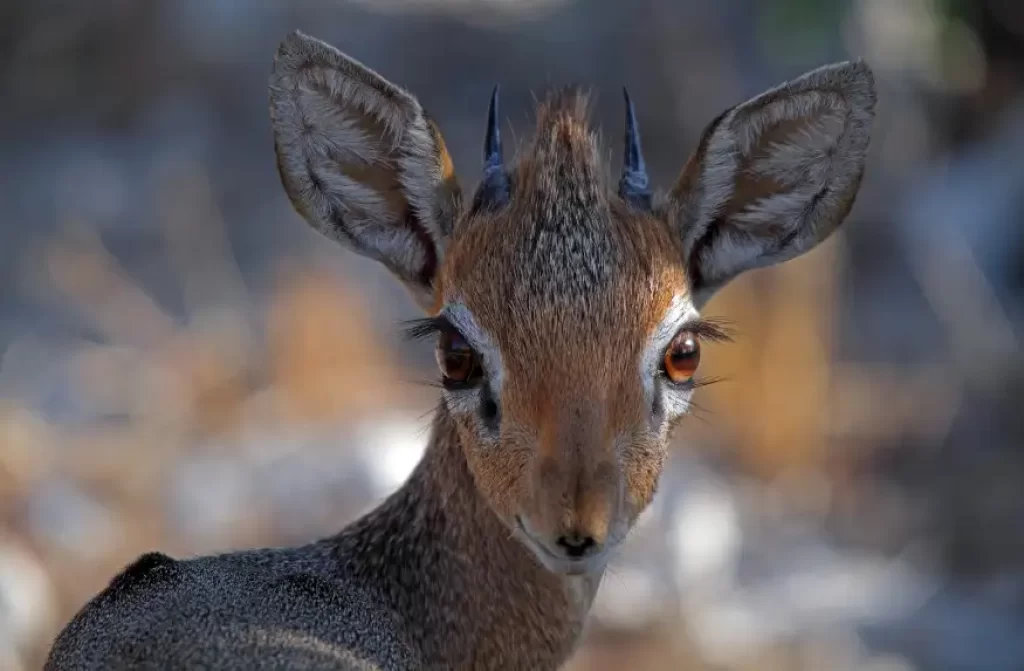
Dik-diks have adapted to their arid habitats in remarkable ways. They are well-known for their ability to quickly dart through the savannah, relying on their elongated hind limbs to propel them forward. These bursts of speed and remarkable agility allow them to easily navigate their environment.
Although dik-diks lack the characteristic hopping motion of kangaroos, their elongated limbs and nimble nature are adaptations that serve a similar purpose. These features help them traverse their habitat efficiently and evade potential threats.
08. Pademelon
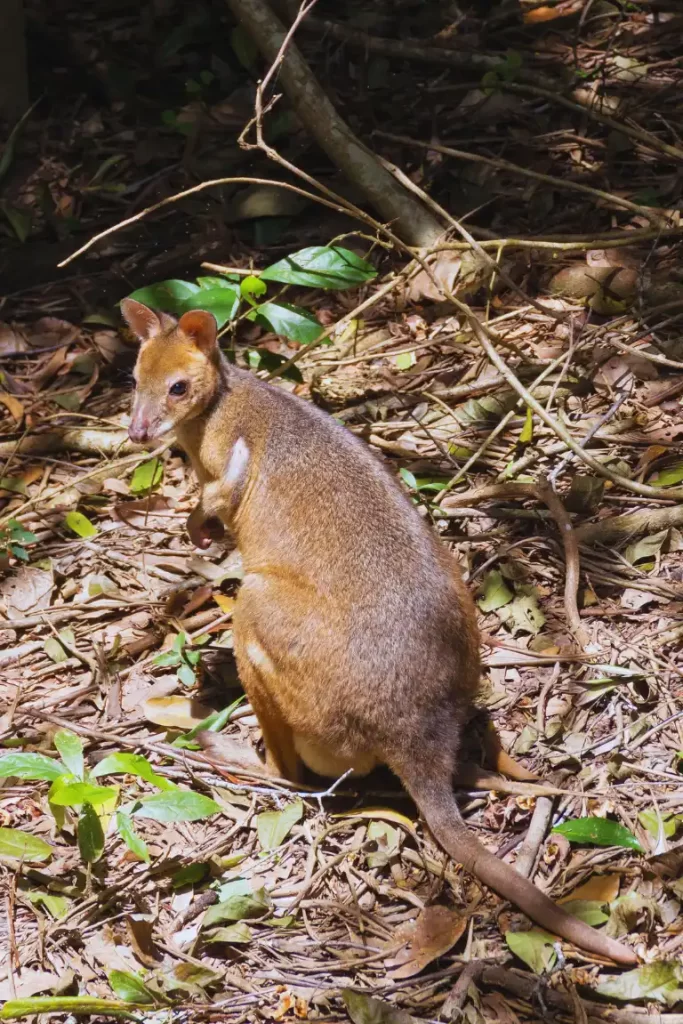
Pademelons are small marsupials found in Australia, Papua New Guinea, and Indonesia. While they share the same family as kangaroos, pademelons possess distinct features that set them apart.
One noticeable difference between pademelons and kangaroos is their size and build. Pademelons have a more compact body and shorter legs, making them ideally suited for their habitat. They are skilled at maneuvering through dense vegetation, utilizing their agility and smaller stature to their advantage.
Despite their smaller size, pademelons exhibit a hopping motion reminiscent of kangaroos. While the scale of their hops may be smaller, their movement retains the characteristic rhythm of their larger relatives.
Observing a pademelon gracefully hopping through its environment is a testament to the versatility and adaptability of these fascinating creatures.
Pademelons are also experts at blending into their surroundings. Their unique coat patterns and colors allow them to camouflage themselves amidst the dense foliage easily.
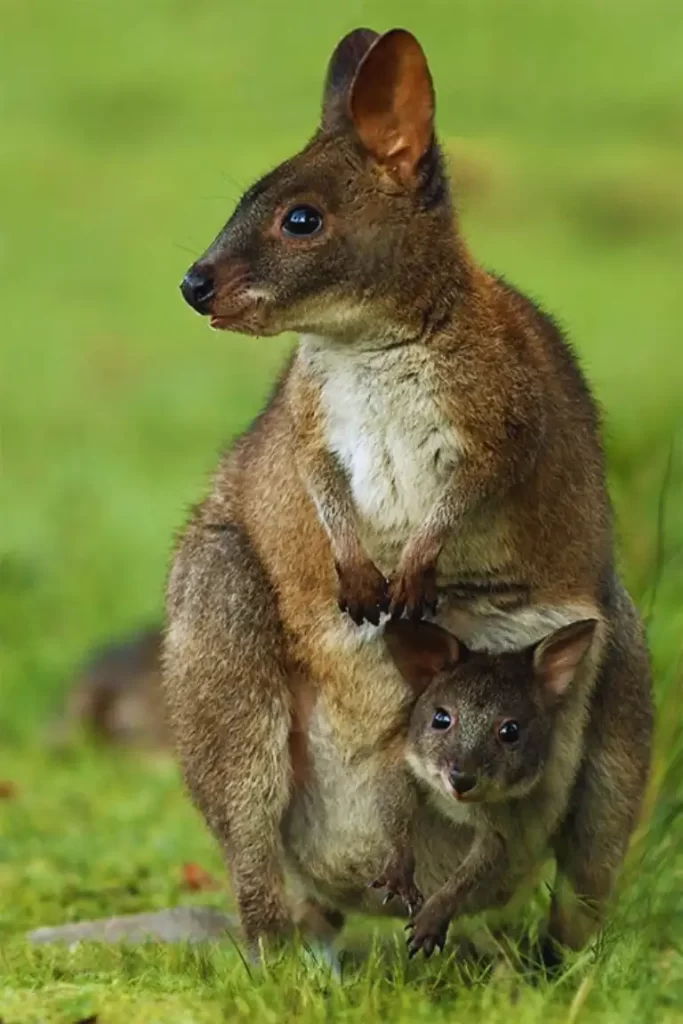
This adaptation allows them to remain hidden from predators and ensures their survival in their natural habitats.
While pademelons may resemble kangaroos in their hopping behavior, their distinct size, build, and habitat preferences make them a unique and intriguing species in their own right. Exploring the diverse world of marsupials reveals the incredible variations and adaptations that have evolved to suit different environments.
So, as you delve into the captivating realm of animals that look like kangaroos, take a moment to appreciate the remarkable features of pademelons. Their compact stature, swift hopping motion, and outstanding camouflage abilities make them a fascinating addition to the family of marsupials.
09. Gerenuk (Litocranius walleri)
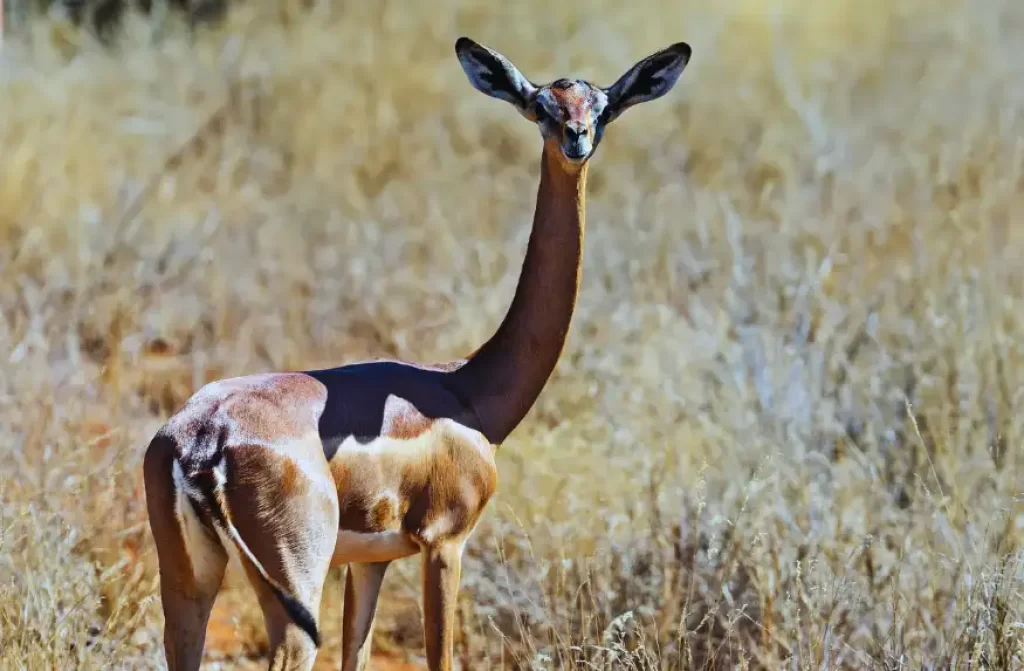
Have you ever heard of the Gerenuk (Litocranius Walleri)? This extraordinary antelope can be found in eastern Africa and is truly a sight to behold.
What sets it apart from other antelopes are its elongated limbs, small head, and long neck, which give it an uncanny resemblance to a kangaroo.
These unique features also allow the Gerenuk to stand upright on its hind legs and use its tail for balance while stretching its neck to reach leaves and shoots high up in trees.
The Gerenuk’s ability to stand up on its hind legs is remarkable and sets it apart from other antelopes.
This standing posture allows the Gerenuk to reach higher up in trees for food, especially during the dry season when food is scarce.
Despite its unusual appearance, the Gerenuk can blend in well with its surroundings, thanks to its sandy brown coat and white underbelly.
Interestingly, the Gerenuk is also known for being a solitary animal, although they may occasionally join together in small groups.
These majestic creatures are indeed a wonder of nature and a testament to our planet’s incredible diversity of life. If you ever have the opportunity to see a Gerenuk in the wild, it is an experience you will never forget.
10. Potoroos
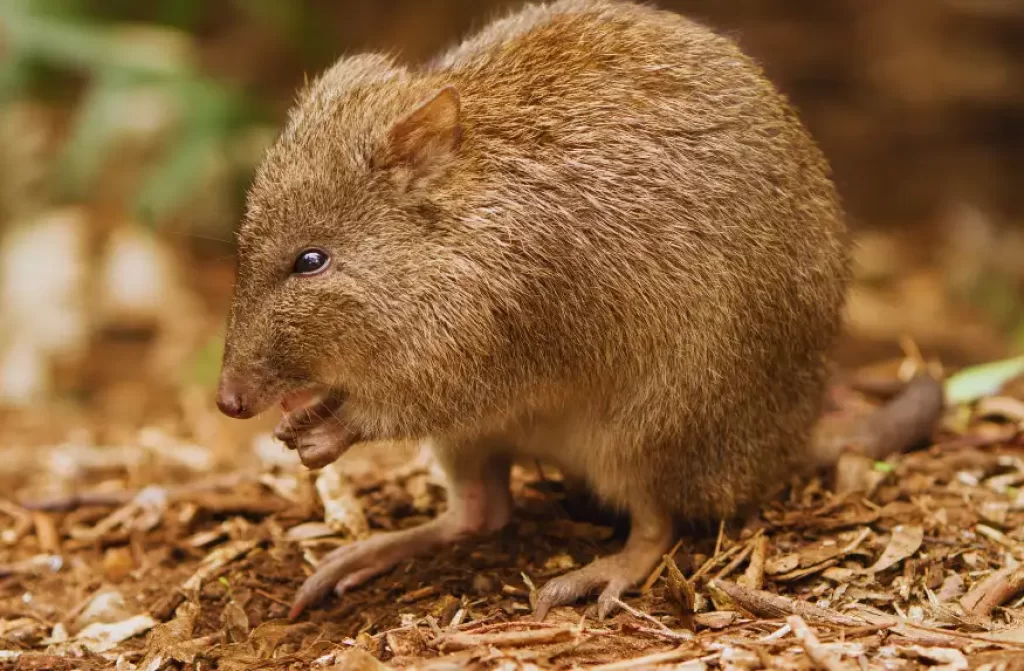
There is so much to learn about the amazing wildlife that can be found in Australia! For instance, did you know that potoroos are a type of small marsupial that is native to this incredible continent?
Despite being related to kangaroos, these adorable creatures have unique physical characteristics that set them apart from their larger cousins.
For starters, they have a rounder body shape and shorter legs, which make them better suited for maneuvering through dense forests. They also have a shorter tail, which helps them maintain their balance as they hop about.
Potoroos are genuinely fascinating creatures to observe in the wild. They are excellent hoppers and can cover impressive distances in a single bound. But despite their amazing agility, they are quite elusive and can be difficult to spot in their natural habitat.
They usually reside in dense forests, where they skillfully maneuver through the undergrowth in search of food and shelter.
Wrapping things up…
Even though kangaroos are native to Australia, several unique animals in various parts of the world showcase similar physical characteristics and behaviors.
The Patagonian Mara, Springhare, Wallaroo, and Jerboa are some of these species, proving nature’s incredible ability to create comparable adaptations to tackle environmental obstacles.
I trust this article was informative, and please remember, if you want to learn more about kangaroos or other animals, we are the perfect source of information!







